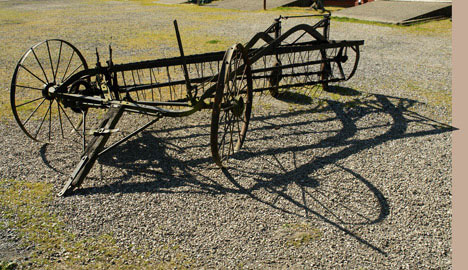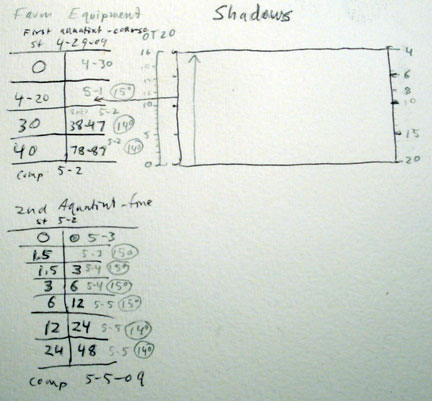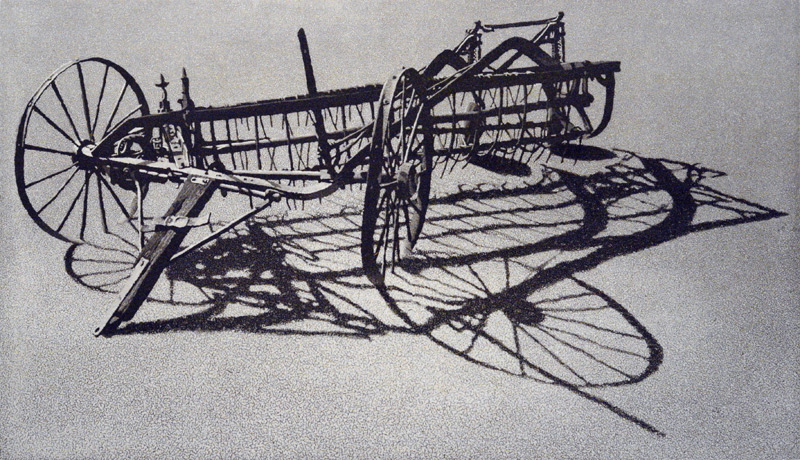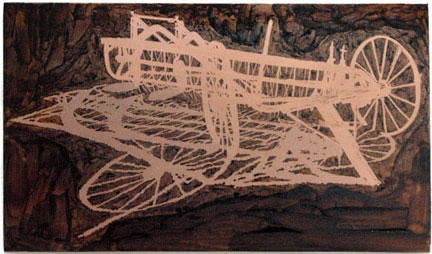

For this print I used two rosinings to create the image. The first rosining was variably heated, so that the grains at the more heated bottom were larger and less metal was exposed than at the top. I painted out the farm equipment before the first etch, which was a 20 to 4 minute creep-etch started at the bottom. (See etch record diagram)
It is interesting that the creep etch and the variable heating of the rosin tend to cancel each other out to create a rather even tone from top to bottom.

I also did a 30 minute and a 40 minute etch over the first rosining to define the shadow area. This is a proof of the plate at this point.

